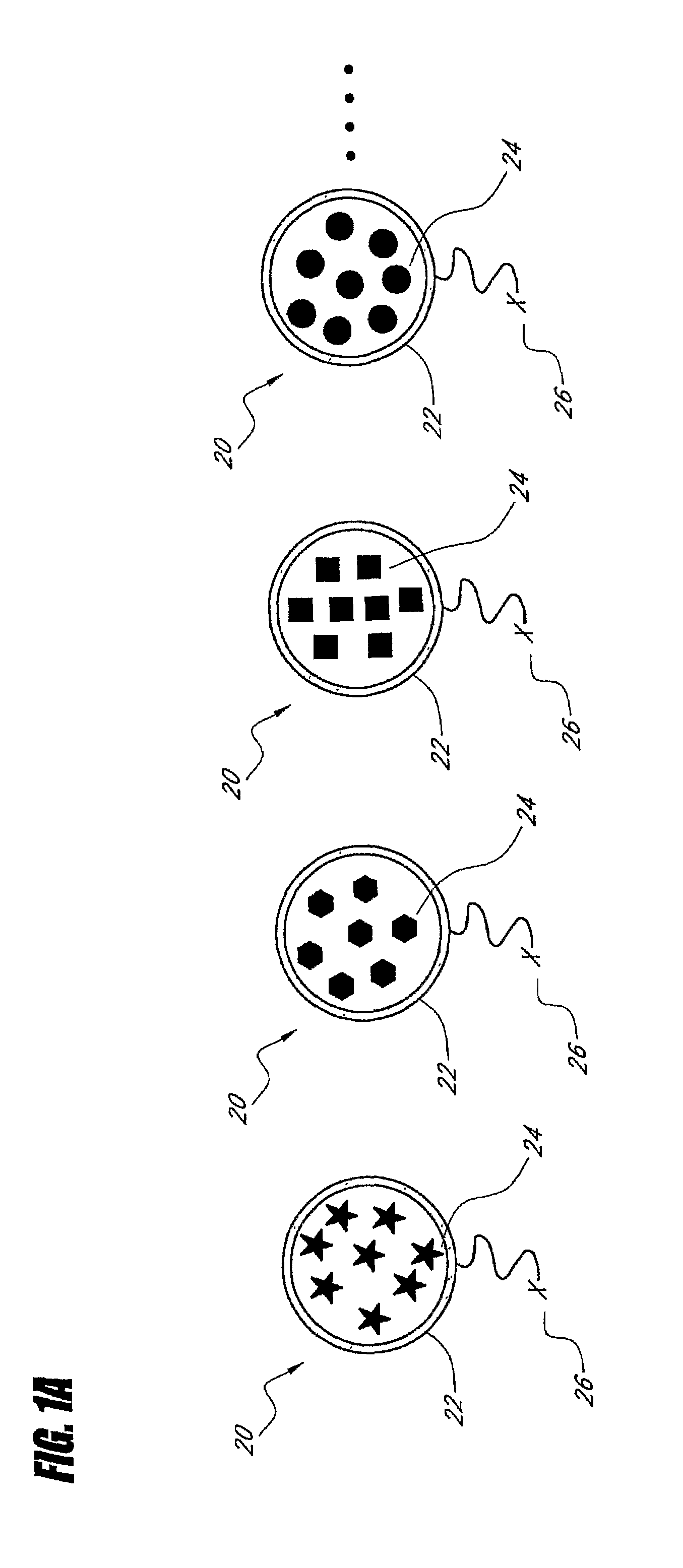Multiplex detection probes
a detection probe and multiplex technology, applied in the field of chemical analysis, can solve the problems of difficult to replicate microarray experiments, compare data among samples, and only handle one or two samples on a single microarray chip, etc., to achieve highly sensitive multiplex analysis of molecules, increase the signal intensity of molecular probes, and strengthen signaling
- Summary
- Abstract
- Description
- Claims
- Application Information
AI Technical Summary
Benefits of technology
Problems solved by technology
Method used
Image
Examples
examples
Hybridization Assay
[0066]The above encapsulated, uni-lamellar, and multi-lamellar vesicle probes were tested using a hybridization assay.
[0067]Oligo(dA)20 and oligo(dT)20-tethered vesicles were prepared. The encapsulated and uni-lamellar vesicles were prepared in the following steps: 20 μmol of 1,2-dipalmitoyl-sn-glycero-3-phosphocholine (DPPC), 20 μmol of cholesterol, 2 μmol of 1,2-dipalmitoyl-sn-glycero-3-[phosphor-rac-(1-glycerol)] (DPPG) and 1 μmol of 1,2-dipalmitoyl-sn-glycero-3-phosphoethanolamine-N-(glutaryl) (glutaryl-DPPE) were dried off in chloroform under a vacuum. The dried lipids were swelled in 1 ml of 50 mM Tris-HCl, pH 7.4, 500 mM NaCl and 100 mM sulforhodamine B (SRB) at 45° C. for 1 hour. The vesicles were prepared by filtering the mixture thirty times with a 2.0-μm-pore membrane and thirty times with a 0.2-μm-pore membrane. The vesicles were purified from unincorporated SRB by G-25 column.
[0068]The multi-lamellar vesicle was prepared in several steps. For the “ins...
PUM
| Property | Measurement | Unit |
|---|---|---|
| diameter | aaaaa | aaaaa |
| molecular weight | aaaaa | aaaaa |
| molecular weight | aaaaa | aaaaa |
Abstract
Description
Claims
Application Information
 Login to View More
Login to View More - R&D
- Intellectual Property
- Life Sciences
- Materials
- Tech Scout
- Unparalleled Data Quality
- Higher Quality Content
- 60% Fewer Hallucinations
Browse by: Latest US Patents, China's latest patents, Technical Efficacy Thesaurus, Application Domain, Technology Topic, Popular Technical Reports.
© 2025 PatSnap. All rights reserved.Legal|Privacy policy|Modern Slavery Act Transparency Statement|Sitemap|About US| Contact US: help@patsnap.com



